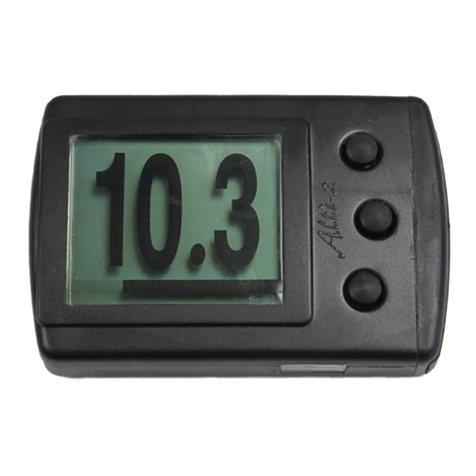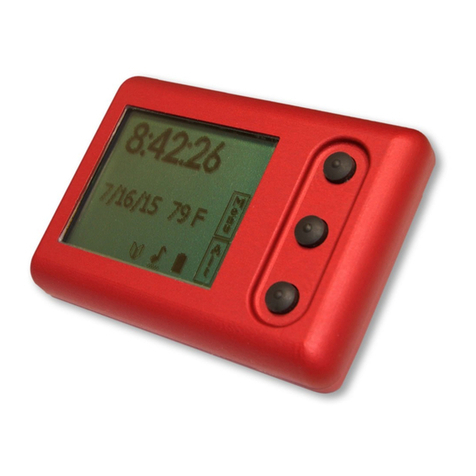
An Altimeter is a mechanical device and may malfunction, even when properly
designed, built, assembled, maintained and used. Failure to be aware of such
malfunctions may result in serious injury or death.
THEORY OF OPERATION
Altimaster Altimeters do not measure altitude! The altimeter relies upon the
relationship between air pressure and altitude (air pressure decreases as altitude
increases, and vice versa), and the fact that this relationship does not change
significantly during the time period taken to perform a normal skydive. The altimeter is a
mechanical device that indicates changes in altitude by reacting to changes in air
pressure. A sealed capsule changes volume as the outside air pressure changes, and
moves a needle through a mechanism to indicate relative altitude.
It is the responsibility of the user to adjust the altimeter so that it will indicate altitudes that
correspond with the above ground level (AGL) altitude above the intended landing area, and
that the altimeter will read 0 (zero) on the ground at the intended landing area.
Capsule
The mechanism of the altimeter consists of an evacuated aneroid capsule and a
mechanical movement to amplify the linear motion of the capsule to a rotational motion
of the pointer.
The aneroid capsule consists of two diaphragms made of an alloy of copper and
beryllium. The two diaphragms are welded together under high vacuum to produce a
virtually airless capsule. Since the atmospheric pressure decreases with an increase in
altitude and the pressure inside the capsule remains constant, the capsule expands with
an increase in altitude. As the altitude decreases, the capsule will return to its normal
state. The motion of the capsule’s expansion and contraction is transferred to the
mechanical movement to cause the pinion to rotate.
Since the capsule will expand and contract with changes in the barometric pressure, the
altimeter is designed to allow the user to adjust the mechanism to the zero setting on the
dial.
Mechanism
The mechanical movement transfers the linear motion of the capsule to a rotational
motion of a pinion through a system of levers and gears. A pointer is attached to the
pinion so the rotation of the pinion can be indicated.






























